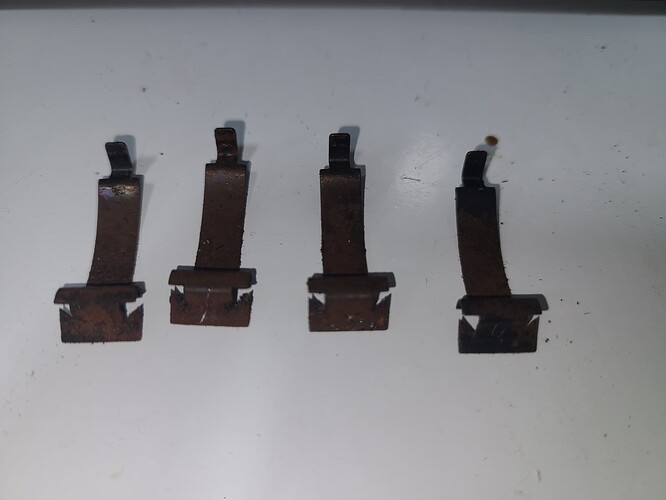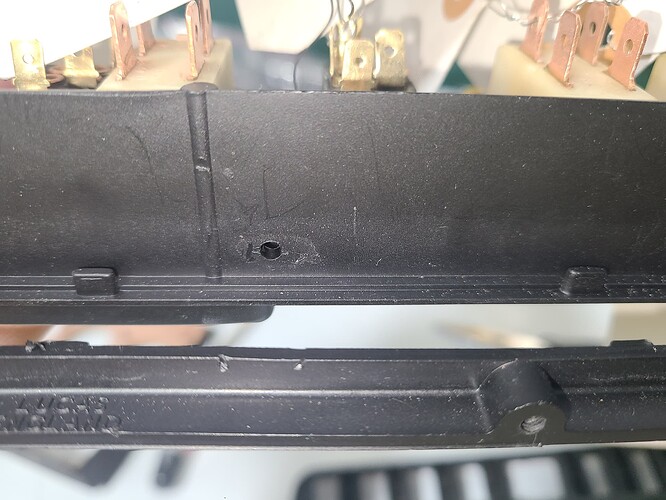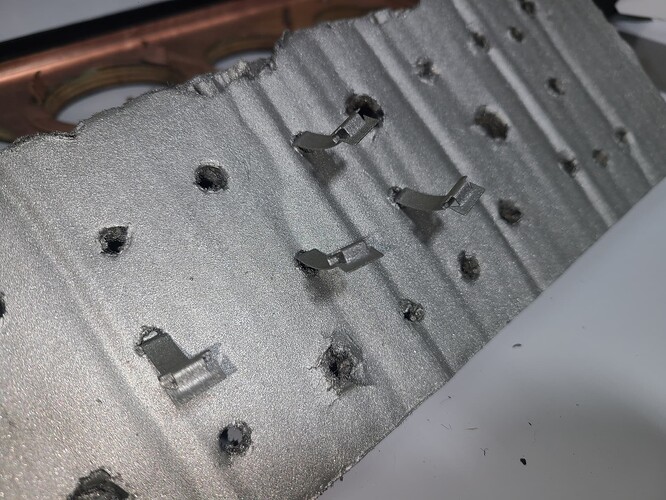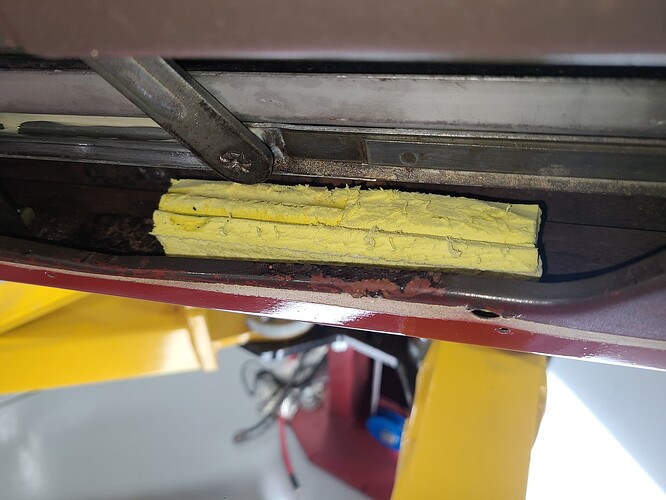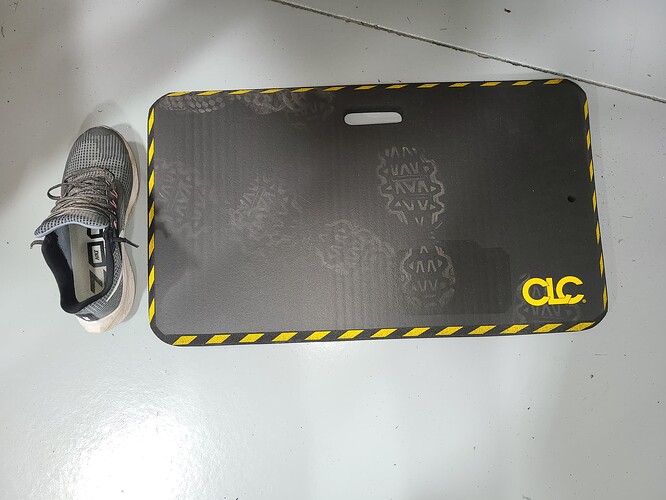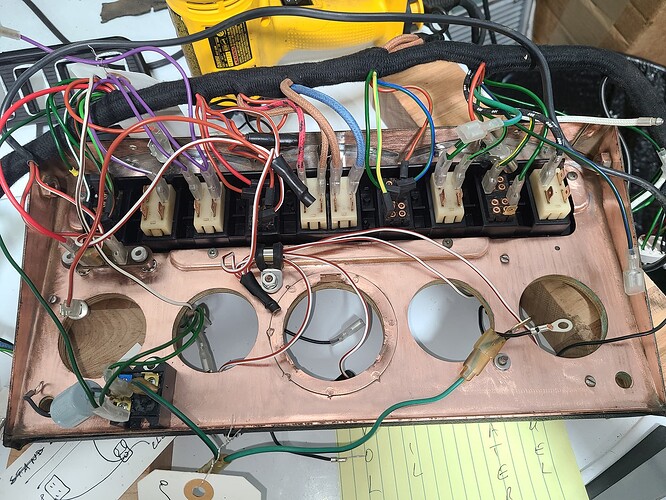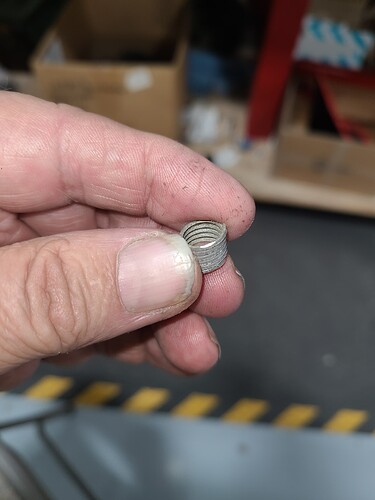SUMMARY OF PREVIOUS THREADS I thru XIII
Part I - Introduction of Hobby Shop and removal of engine/transmission
Part II - Removal of all wiring harnesses, dropping fuel tank, stripping the car of all ancillaries and cleaning asphalt coating from under-body/bonnet
Part III - Engine Tear Down, Removal of Heads, Chrome to Chrome shop, Prep for and actual Painting of the Jaguar
Part IV - A comprehensive matrix of nickel and cadmium platers // Procedure for removing crankshaft // Removing timing chain, guides and tensionor // Repair Timing Chain Cover (aluminum welding) // V12 Exhaust system options // Removal and ultimately Replacing Oil Pump ($$) // Checking Cam Sprockets for reuse // Challenges of removing 6 stuck pistons/sleeves (significant portion of this thread) – including a trip to a machinist; spread over a wide range of posts // Discussion of glass beading and/vs vapor blasting // Return of Chrome
Part V - carbs and dizzy return from rebuild (with contact data) // options for A/C compressor // installed left and right side wiring harnesses and Bulkhead Harness // challenges attaching Bulkhead Harness Grommet (C30670) // Elastrator as a possible tool to solve issue // more on vapor blasting – a definitive discussion // purchased a non-Series III boot lid seal during a group buy to use as a boot lid seal // started install of distributed compressed air from the compressor.
Part VI - processes of wiring new bulkhead harness to the 4x new fuse boxes // variations of Series III Wiring Diagrams // MarekH: Jaguar Wiring 101 // how-to regarding Home Made Circuit Tester for less than $10 // Comparo of newly cadmium bits and tubes to old // rebuilding wiper motor // new Exhaust System // comparo of incandescent bulbs to LED equivalent // camparo of mechanical brake light switch vs hydraulic // tricks to re-installing pick-up/return lines and the ins and outs of the in-tank fuel filter // receipt of all bits to rebuild heads and choosing a machine shop // YouTube videos covering the wiring of the 10x switches on the gauge panel // a source for better than new Front Upper A-Arms (AKA wishbones)
Part VII - the Terminal Post on a Series III is Whitworth (a 1/4 Whitworth Spanner will be correct) and the proper sequencing of the cables // the utility of grounding straps including photos of OEM grounding straps locations // do’s and don’ts’s of applying Dielectric Grease // heads are refurbished – machining done // a schedule of lead times for out-sourced procedures // application of ceramic coating on my fresh paint // definitive identification of Horn Relay Bracket // installing LED panels in brake/tail lamps and front turn signals // a pair of restored Upper Wishbones arrive from Australia // THE definitive discussion of dealing with hydrogen embrittlement on cadmium plated parts //
Part VIII - the need for special washers or rivets to attach side chrome on door // testing fuel sender // installing X-Mat sound-heat barrier on floor pan // receive crankshaft and ConRods back from balancing / polishing // the utility of DEI heat shields // return of ½ the front suspension pieces from cad Plater // Interior Kit receives // the complete solution of the placement of unmarked underfelt pieces
Part IX - applying ACF-50 on aluminum pieces, pressing in Front Suspension Bushings, installation technique for C30670 firewall grommet, stripping radiator cowl. dealing with inner and outer seals on window crank handle.
Part X - assembly of Pistons onto Rods, deciphering A and B pistons vs A and B Head on V12, beginning to reattach front suspension, front horseshoe frame can go on two ways but only one is correct, techniques to plug the air Injection Ports on exhaust side of V12 heads, powder coated cam covers, locknuts vs lock washers, repair options for A/C evaporator and condenser, repair options to rebuild PS rack, A/C compressor replacement options, relay on switches of A/C evaporator, window regulator and various door seals, installing pistons on crankshaft, no need to clock gaps in piston rings, correct version of timing chain tensioner, PDWA install, renewing Radiator Fan Motors, and Bulkhead Layout diagram.
Part XI - how to re-attached hard lines, sources for Belleville Washers, correct assembly order for washers/spacers/etc on upper/lower front suspension, THE definitive discussion about window regulator - where seals go (and where they don’t) - lube points - winder spring - how to insert the regulator - sequence of insertion, Lesson Learned about trusting vs verifying (ref machine shop setting valve lash), dimensions and obstructions for hard wood spacer insert in the bottom of the picture frame, adding a duct fan to fresh air hoses, grounding strap(s), and it’s a tie down point used during shipping not a towing eye.
Part XII - upper and lower door glass stops, applying DEI Heat Shields to Trans Tunnel, importance of cleanliness of regulator spring, Terry’s for long and short PS Rack lines (plan on 3-5 weeks for delivery), orientation of motor mounts (and the challenges of mounting them), installing boot matting and the mat that doesn’t belong on an OTS (lots of photos of original matting), conducting a gas leak test of valves sets, short block → long block, powder coating results.
Part XIII - Sources for Brake Line Kit, trials of 2x small head studs that stripped during head torqueing procedure (biggest coverage), dimension of lower window stop, 1986-92 dead Pedal from RX7 works/fits in Series III XKE, install of duct fans, install of fresh air vents in cabin, items to check on steering column before reinstalling it, reassembly of heater matrix with new matrix, new valve and sealing kit.









